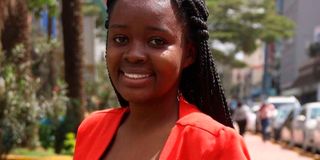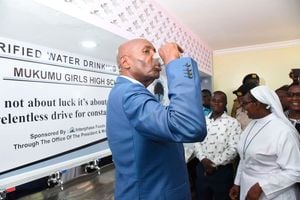My experience covering Mukumu Girls tragedy

Hellen Shikanda, Health and Science reporter at Nation Media Group.
What you need to know:
- Speaking to parents who lost their child was daunting. The grave outside their mud house was still fresh with flowers atop a cross made of twigs almost withering.
- The parents were desolate as they stood before the grave of their lastborn child, one whom they hoped would elevate their status. Probing the last moments they had with their daughter was heavy for both us, the reporters, and presumably, them as well.
On the day that the Nation published a special deep dive on what happened in Mukumu Girls, you could tell how much void people had because of the unanswered questions.
A torrent of comments trickled in on social media.
I reshared the story on my Twitter handle and tweeted; “stories don’t end when they break, they start when we get curious about what happened before they broke”. This is what informed the commissioning of this assignment, and I was aching to understand the science behind students at the institution falling ill.
I was on an assignment in Wajir County when my editor called me and asked me to prepare to leave for Western Kenya to work on a special report.
This was a few days after the Sacred Heart Mukumu Girls had closed indefinitely following the puzzle of sickness and death of some students and a teacher.
I left a day after my Wajir assignment and went to meet my colleagues, whom we worked with on the story.
To tell such a story, we needed to start with the known and sift facts from fiction by speaking to the right people.
At the time, all we knew was that students were sick, they presented with specific symptoms and there was no scientific backing on what happened to their bodies.
On our first day of investigations, the Health ministry released findings from the Kenya Medical Research Institute inferring the illness to two pathogens; E Coli and Salmonella Typhi.
This gave a bearing to our investigations, but we put that on hold and spoke to those who experienced the illness first hand.
For the students we spoke to, recounting the ordeal was both traumatising and therapeutic.
Traumatising because they had heard that their colleagues who had the symptoms had died. Therapeutic because we spoke to them just days after weeks of being bed-ridden and they needed to let it off their chests.
The parents on the other hand had worry printed on their faces. They were unsure whether to take their students back to a school that almost robbed them off their lives. They didn’t know what caused the disease because a laboratory result as blanket as E Coli or Salmonella Typhi is a preserve of elite scientists. What they wanted to know is how E Coli made its way to their daughters’ bodies. What does it do to their bodies? What is the survival rate after infection? Is it recurring, like a flu, or does it fly away and shrink like a pricked balloon.
Speaking to parents who lost their child was daunting. The grave outside their mud house was still fresh with flowers atop a cross made of twigs almost withering. The parents were desolate as they stood before the grave of their lastborn child, one whom they hoped would elevate their status. Probing the last moments they had with their daughter was heavy for both us, the reporters, and presumably, them as well.
Sometimes we could tell that words failed to come out of their minds. We could tell that the more we asked the questions, the more we painted the picture of their daughter.
In the subsequent days, considering the fieldwork in Western Kenya took about five days, we met the whistleblower cook who spilled the beans. He was unafraid. We went to his house. We met his family. He showed us a file where he had kept letters of being admonished for speaking up. He insisted that he will always stand with the truth.
Despite all the evidence he showed us, the cardinal rule of journalism is to always seek a second opinion and find out if they tally. We confirmed his allegations from a second source from the school who wished to stay completely anonymous. We spoke to villagers around the school. We went to hospitals around Khayega in Kakamega County, who, at the time, were asked not to speak to the media and so we didn’t get the information we needed.
Back in Nairobi, we followed up with scientists to explain the logic of the findings from the Kenya Medical Research Institute, all of whom said there was need for further analysis to pinpoint the results to a specific thing.
We spoke to an alumnae whose only wish was to have sanity in the school restored and their glory reshaped. It took a month, an effort from a whole team to get the answers we got for the Mukumu Girls’ story. If anything, science is what we swear by when writing a scientific story, and that is what we stick to, by rote.





